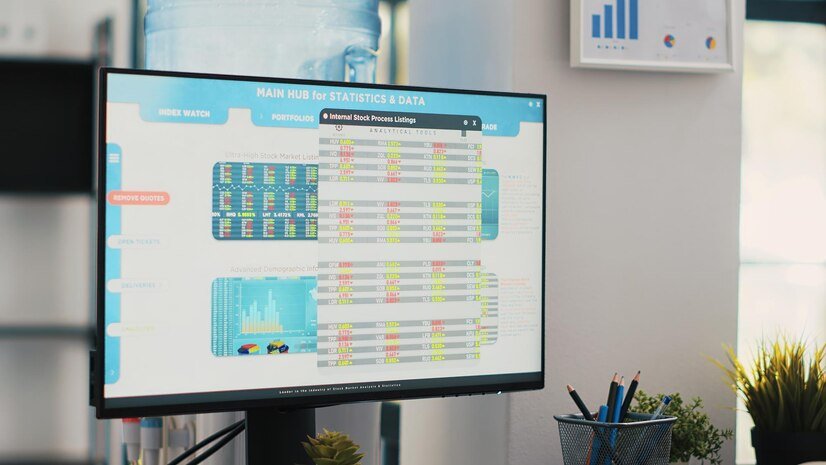Spreadsheets are one of the most effective tools for organizing and managing data. Whether in Excel, Google Sheets, or any other spreadsheet software, these platforms provide users with a structured, grid-like format. At the heart of this format lie spreadsheet rectangles—cellular units that store, calculate, and present data. Without these rectangles, spreadsheets would lose their inherent ability to organize information in a clear, intuitive manner.
In this article, we’ll explore what spreadsheet rectangles are, how they contribute to efficient data management, and why they are indispensable in modern digital work environments. Along the way, we’ll share practical insights and strategies to make the most of spreadsheet rectangles for your needs, whether you’re analyzing financial data, creating reports, or visualizing information.
The Foundation of Spreadsheets: Understanding Spreadsheet Rectangles
At its core, every spreadsheet is built from a series of rows and columns intersecting to create rectangular cells. These cells are essential for organizing data in a logical format. Spreadsheet rectangles, which are the individual cells formed at the intersection of rows and columns, allow users to input data and perform functions like sorting, filtering, and analyzing.
A key feature of these rectangles is their adaptability. You can merge cells to create larger rectangles or leave them as singular units, depending on how you want to structure the data. Their flexibility makes them useful across various applications, from simple lists to complex data sets.
Why Spreadsheet Rectangles Are Critical for Data Management
Spreadsheet rectangles serve as the basic building blocks for data storage in a grid format. Their structure makes it easy for users to:
- Organize Information: Whether it’s text, numbers, or formulas, each rectangle stores individual data, keeping your information structured and easy to navigate.
- Perform Calculations: Rectangles are used to hold formulas, which then calculate values across different sections of a spreadsheet. From summing up sales figures to calculating averages, the functionality of these cells makes data analysis straightforward.
- Visualize Data: With options like conditional formatting, spreadsheet rectangles can be visually adjusted to reflect different data trends, enabling easier interpretation of results.
By organizing data within these rectangles, users can efficiently track, calculate, and analyze vast amounts of information without feeling overwhelmed.
Navigating Rows, Columns, and the Grid Layout
Spreadsheet rectangles are formed by the intersection of rows and columns. Each column is labeled alphabetically, while rows are numbered. For example, cell A1 refers to the rectangle at the intersection of column A and row 1. This intuitive grid layout allows users to locate, edit, and analyze data quickly.
- Rows: Rows run horizontally across the spreadsheet, and are typically used to represent different records or observations. Each row in a spreadsheet houses a unique set of data points.
- Columns: Columns run vertically and usually represent categories of information, such as date, name, or value. Data entered into a column should be consistent across the entire row to maintain organization and accuracy.
- Grid Layouts: The grid layout enables easy navigation between cells, rows, and columns. You can quickly reference specific data points or perform mass edits across multiple rectangles simultaneously.
Customizing Spreadsheet Rectangles for Enhanced Workflow
One of the most powerful aspects of spreadsheet rectangles is their customization options. Users can tailor rectangles to their specific needs, improving both functionality and presentation.
- Merging Cells: Sometimes, data spans multiple categories or requires a more extended format than a standard cell provides. By merging cells, you can create larger rectangles, allowing for more comprehensive labels or summaries.
- Adjusting Cell Size: Spreadsheet rectangles can be resized to fit more or less information, depending on the data type and presentation needs.
- Applying Formulas: One of the most common uses of spreadsheet rectangles is storing formulas. From basic operations like addition and multiplication to more advanced functions such as VLOOKUP or SUMIF, formulas are a key part of spreadsheet operations.
- Conditional Formatting: By applying color rules or highlighting specific ranges, you can visually separate data, helping you interpret it more quickly. For example, you could color code sales data to easily see the highest and lowest sales figures in a set of spreadsheet rectangles.
The Power of Spreadsheet Formulas in Rectangles
Spreadsheet rectangles can do more than just store static data—they can actively manipulate and analyze information through formulas. Whether you’re dealing with basic arithmetic or complex statistical analysis, formulas help turn raw data into valuable insights.
- Basic Arithmetic Formulas: Most users rely on spreadsheet rectangles for simple calculations like summing rows or multiplying values across columns. Spreadsheet rectangles make it easy to input these formulas and instantly see the results.
- Advanced Formulas: If you’re working with more intricate data sets, spreadsheet rectangles can be used for formulas like INDEX-MATCH or conditional summing with SUMIF and COUNTIF. These more complex formulas allow for in-depth data analysis and reporting.
Data Visualization with Spreadsheet Rectangles
In addition to data management and calculations, spreadsheet rectangles play a vital role in data visualization. When used correctly, they can display graphs, charts, and tables that simplify complex data.
- Creating Tables: You can format multiple spreadsheet rectangles into a cohesive table, making it easier to sort and filter data. Tables also allow for dynamic updates as new data is entered.
- Building Charts: Spreadsheet rectangles serve as the foundation for creating charts and graphs. By selecting a range of cells, you can instantly generate visual representations of your data, such as pie charts, bar graphs, or scatter plots.
- Conditional Formatting: Spreadsheet rectangles offer conditional formatting, which applies color coding based on specified criteria. For instance, in a sales report, you could highlight all values over $10,000 in green, giving you an instant visual cue about performance.
Spreadsheet Rectangles and Data Collaboration
In collaborative environments, spreadsheet rectangles become invaluable for tracking, sharing, and updating data in real time. Most spreadsheet applications, like Google Sheets, offer multiple users access to the same document, allowing them to edit and view data simultaneously.
- Real-time Collaboration: Whether you’re managing a project with team members or working on a shared financial report, real-time collaboration means updates are instantly reflected for all users. Spreadsheet rectangles allow multiple people to input data into specific cells without overlapping.
- Version Control: Most modern spreadsheet software retains a history of changes, allowing you to revert to previous versions or track who made edits. This is essential when managing large data sets with multiple collaborators.
Practical Applications of Spreadsheet Rectangles
Spreadsheet rectangles offer a multitude of applications across industries and sectors:
- Financial Management: Spreadsheet rectangles can be used to organize and track expenses, create budgets, and forecast financial trends.
- Inventory Management: By organizing stock items in a clear format, businesses can monitor inventory levels, track purchases, and project future needs using formulas stored in spreadsheet rectangles.
- Academic Data: Educators and students alike can use spreadsheet rectangles for tracking grades, analyzing performance, and planning study schedules.
- Project Management: Spreadsheet rectangles can house project timelines, task lists, and resource allocations, providing a visual and organized format for managing workstreams.
Best Practices for Using Spreadsheet Rectangles Effectively
To get the most out of spreadsheet rectangles, it’s important to follow best practices:
- Organize Your Data: Ensure that each rectangle is used for a distinct purpose, and try to maintain consistency across columns and rows.
- Label Everything Clearly: Use headers and labels to define what each column and row represents. This will make it easier for others to interpret your data.
- Regularly Back Up Your Data: If you’re working on critical information, consider making regular backups of your spreadsheet to avoid data loss.
- Keep It Simple: While spreadsheet rectangles offer many powerful features, it’s important not to overcomplicate your spreadsheet with too many formulas or formatting rules.
Spreadsheet Rectangles
Spreadsheet rectangles form the foundation of any effective data management strategy. Their ability to store, analyze, and present data in a structured format makes them indispensable in a wide range of industries. By mastering spreadsheet rectangles, you can unlock the full potential of your data and streamline your workflows, whether you’re a business professional, academic, or casual user. From their simple yet powerful structure to their endless customization options, spreadsheet rectangles will continue to be a vital part of data organization and analysis in the digital age.
FAQs
What are spreadsheet rectangles?
Why are spreadsheet rectangles important?
Can I merge multiple spreadsheet rectangles?
How do formulas work in spreadsheet rectangles?
How do spreadsheet rectangles help in data visualization?
What are some best practices for organizing data in spreadsheet rectangles?
Conclusion
Spreadsheet rectangles are the unsung heroes of digital organization. With their structured, grid-based format, they provide the clarity and flexibility needed to handle everything from simple lists to complex data sets. By harnessing the power of spreadsheet rectangles, you can streamline your data management tasks, improve collaboration, and unlock new insights from your information.











